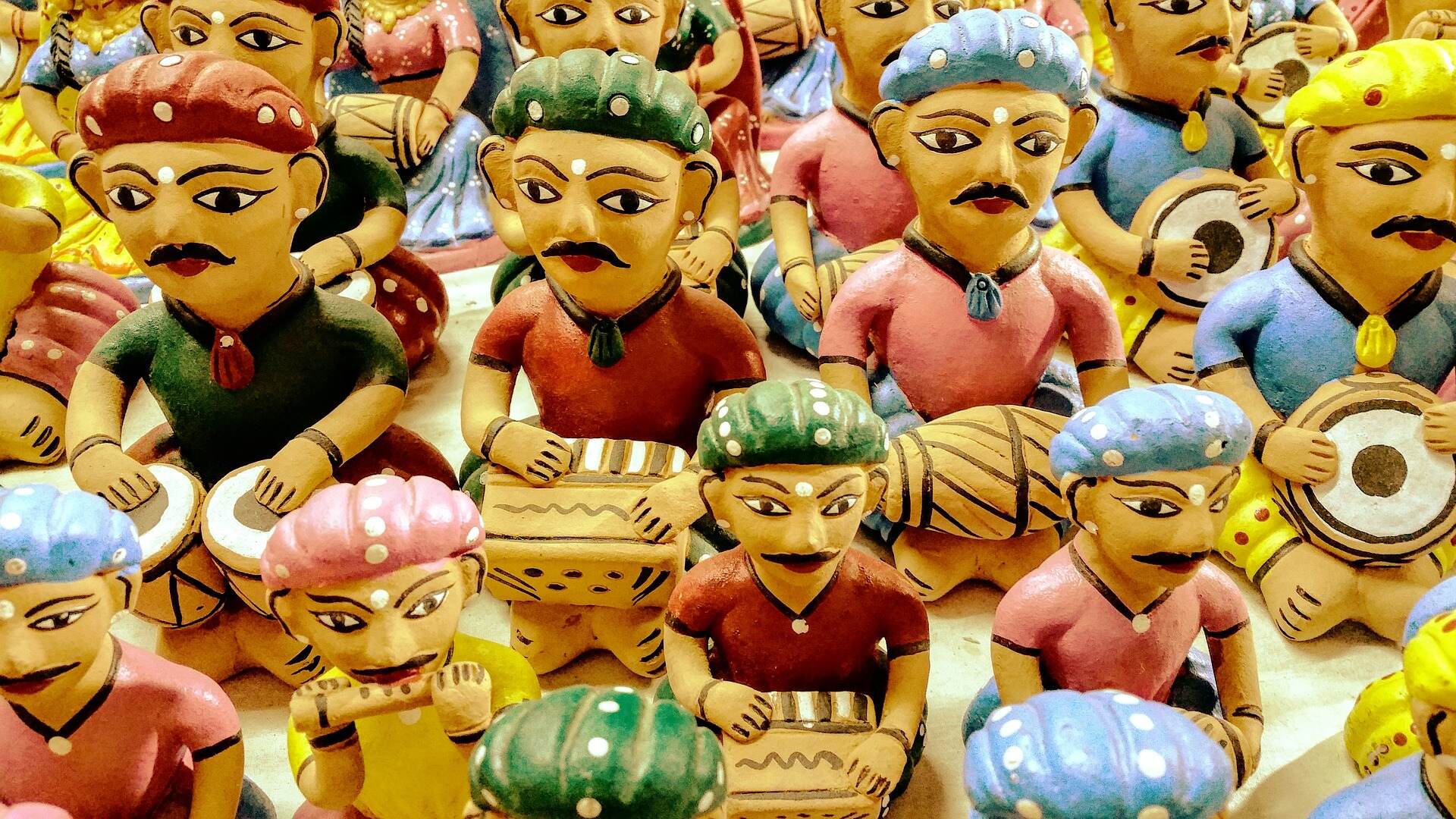Propitious positioning
Apart from generating employment domestically, India’s handicraft sector can consolidate its niche in the global market; write Pawan Sain & Akanksha Saini

India is known for its distinct history, from north to south and east to west. Indian artisans provide a legacy of their land and culture through their distinct art forms, which are passed down to future generations. The country is the epitome of exquisite handicrafts. Handicrafts mean items made by hand, often with the use of simple tools. These are generally artistic and/or traditional in nature like pashmina shawls of Jammu and Kashmir, blue pottery of Rajasthan, chikankari and zardozi work of Uttar Pradesh and Bamboo handicrafts of Assam.
The Indian handicraft sector has evolved as a crucial economic agent, transforming the lives of millions of people throughout the country. Many artisans used the hard times to recreate themselves online. This sector has the potential to become a multibillion-dollar industry in India. Because of their uniqueness and beauty, demand for Indian handicraft products has steadily increased in overseas markets.
Technology that allows people to communicate across borders has proven to be a boon for the handicraft sector. The artisans need a conducive environment for creating sustainable businesses. They must be made digitally literate to overcome the obstacles to their progress by using the power of technology. If one has a product to offer, attracting a global customer is no longer a distant possibility.
E-commerce has given seamless access to consumer goods, enabling inclusive growth, because manufacturers from any part of the world can exhibit their items through these online platforms.
Until recently, India lacked a unified platform to display Indian handicrafts to a worldwide audience. Reaping the benefits of the e-marketing trend, some craftsmen have now started selling through various portals including the ones owned by them.
According to the Ministry of Textiles, the handicraft industry has a consistent growth rate of 20 per cent per year and employs seven million artisans. The sector is highly labour-intensive and decentralised, and is the second-largest employment generator after agriculture. The handicraft sector, which was severely impacted by the pandemic, is gradually catching up, with both local and international sales increasing and thus raising hopes of fueling the Indian economy further.
Handmade woollen products, woodwares, embroidered & crocheted products, art metal ware, hand-printed textile & scarves, zari & zari items, and imitation jewellery are among India's major exports. Total Indian handicraft exports were valued at USD 4.35 billion in 2021-22 as compared to USD 3.6 billion in 2019-20. The country exports about 85-90 per cent of the total carpets it produces, and is the largest exporter in the world. India is responsible for around 40 per cent of worldwide export of handmade carpets; this industry remained unaffected even during the pandemic. Over the last three years, the export of handmade goods, particularly carpets, has consistently increased.
Given the potential of the textile industry to generate revenue and job opportunities, the Government of India has taken steps to promote the industry and encourage people to work in it. The production-linked incentive (PLI) scheme for the textile sector is one such effort that is estimated to produce around 7.5 lakh extra jobs directly, and a few lakhs more through supporting activities. Because the industry is dominated by women, the new initiative, implemented in line with the government's Atmanirbhar Bharat vision, will empower women and enhance their participation in the formal sector.
Apart from its strong employment potential, the sector is economically significant because of its minimal capital investment, high-value addition ratio, and high potential for export and foreign exchange profits for the country. Several other initiatives have been taken to promote the export of handcrafted items like the 'Dastkar Shashktikaran Yojana' which has partnered with the 'Ambedkar Hastshilp Vikas Yojana' to provide infrastructure, technology, and human resource development to artisans. It was formed to organise artists into self-help groups and societies to encourage bulk production and cost savings in raw material purchases. The 'Mega Cluster Scheme' aims to encourage employment generation and raise the living standards of the artisans. The 'Marketing Support and Services Scheme' supports artists to attend domestic marketing events and trade fairs around the country and abroad, such as Gandhi Shilp Bazaar, Craft Bazaar, and other exhibitions. Virtual marketing events have also been developed to provide artisans with an international marketing platform.
One district One Product scheme can be diversified by including more handicrafts products from other regions. Simultaneously, markets like Janpath emporiums and Dilli haats can be developed where artisans can sell the traditionally created finest quality works that cannot be found anywhere else.
Indian handcrafted products have a niche market all over the world, and hold an advantage over competitors such as China, Philippines, Indonesia, Thailand, Taiwan, and Korea, which make machine-made goods. Given China's plus one strategy, it's a great opportunity for India to set foot in the global market. Due to the low cost of labour compared to other countries, this opportunity could result in additional demand for Indian products. India has a lot to contribute to this global movement with its rich resources of age-old handloom and handicrafts and a vast number of talented artisans.
Pawan Sain is Joint Secretary, EAC-PM; and Akanksha Saini is Young Professional, EAC-PM. Views expressed are personal



